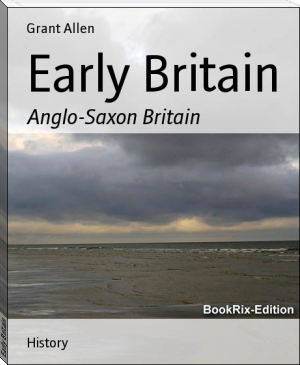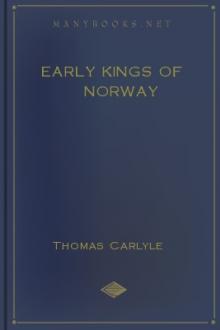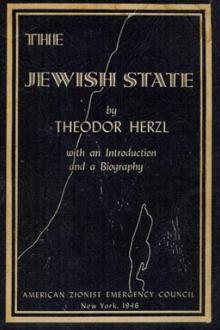Early Britain by Grant Allen (books recommended by bts TXT) 📕

- Author: Grant Allen
Book online «Early Britain by Grant Allen (books recommended by bts TXT) 📕». Author Grant Allen
in war by the reverence of the people for the Church; and they became places where peaceful minds might retire for honest work, and learning, and thinking, away from the fierce turmoil of a still essentially barbaric and predatory community. At the same time, they encouraged the development of this very type of mind by turning the reproach of cowardice, which it would have carried with it in heathen times, into an honour and a mark of holiness. Every monastery became a centre of light and of struggling culture for the surrounding district. They were at once, to the early English recluse, universities and refuges, places of education, of retirement, and of peace, in the midst of a jarring and discordant world.
Hence, almost the first act of every newly-converted prince was to found a monastery in his dominions. That of Canterbury dates from the arrival of Augustine. In 643, Kenwealh of Wessex "bade timber the old minster at Winchester." In 654, shortly after the conversion of East Anglia, "Botulf began to build a monastery at Icanho," since called after his name Botulf's tun, or Boston. In 657, Peada of Mercia and Oswiu of Northumbria "said that they would rear a monastery to the glory of Christ and the honour of St. Peter; and they did so, and gave it the name of Medeshamstede"; but it is now known as Peterborough.[1]
[1] The charter is a late forgery, but there is no reason to
doubt that it represents the correct tradition.
Before the battle of Winwidfield, Oswiu had vowed to build twelve minsters in his kingdom, and he redeemed his vow by founding six in Bernicia and six in Deira. In 669, Ecgberht of Kent "gave Reculver to Bass, the mass-priest, to build a monastery thereon." In 663, Æthelthryth, a lady of royal blood, better known by the Latinised name of St. Etheldreda, "began the monastery at Ely." Before Bæda's death, in 735, religious houses already existed at Lastingham, Melrose, Lindisfarne, Whithern, Bardney, Gilling, Bury, Ripon, Chertsey, Barking, Abercorn, Selsey, Redbridge, Coldingham, Towcester, Hackness, and several other places. So the whole of England was soon covered with monastic establishments, each liberally endowed with land, and each engaged in tilling the soil without, and cultivating peaceful arts within, like little islands of southern civilisation, dotted about in the wide sea of Teutonic barbarism.
In the Roman south, many, if not all, of the monasteries seem to have been planned on the regular models; but in the north, where the Irish missionaries had borne the largest share in the work of conversion, the monasteries were irregular bodies on the Irish plan, where an abbot or abbess ruled over a mixed community of monks and nuns. Hild, a member of the Northumbrian princely family, founded such an abbey at Streoneshalch (Whitby), made memorable by numbering amongst its members the first known English poet, Cædmon. St. John of Beverley, Bishop of Hexham, set up a similar monastery at the place with which his name is so closely associated. The Irish monks themselves founded others at Lindisfarne and elsewhere. Even in the south, some Irish abbeys existed. An Irish monk had set up one at Bosham, in Sussex, even before Wilfrith converted that kingdom; and one of his countrymen, Maidulf (or Maeldubh?) was the original head of Malmesbury. In process of time, however, as the union with Rome grew stronger, all these houses conformed to the more regular usage, and became monasteries of the ordinary Benedictine type.
The civilising value of the monasteries can hardly be over-rated. Secure in the peace conferred upon them by a religious sanction, the monks became the builders of schools, the drainers of marshland, the clearers of forest, the tillers of heath. Many of the earliest religious houses rose in the midst of what had previously been trackless wilds. Peterborough and Ely grew up on islands of the Fen country. Crowland gathered round the cell of Guthlac in the midst of a desolate mere. Evesham occupied a glade in the wild forests of the western march. Glastonbury, an old Welsh foundation, stood on a solitary islet, where the abrupt knoll of the Tor looks down upon the broad waste of the Somersetshire marshes. Beverley, as its name imports, had been a haunt of beavers before the monks began to till its fruitful dingles. In every case agriculture soon turned the wild lands into orchards and cornfields, or drove drains through the fens which converted their marshes into meadows and pastures for the long-horned English cattle. Roman architecture, too, came with the Roman church. We hear nothing before of stone buildings; but Eadwine erected a church of stone at York, under the direction of Paulinus; and Bishop Wilfrith, a generation later, restored and decorated it, covering the roof with lead and filling the windows with panes of glass. Masons had already been settled in Kent, though Benedict, the founder of Wearmouth and Jarrow, found it desirable to bring over others from the Franks. Metal-working had always been a special gift of the English, and their gold jewellery was well made even before the conversion, but it became still more noticeable after the monks took the craft into their own hands. Bæda mentions mines of copper, iron, lead, silver, and jet. Abbot Benedict not only brought manuscripts and pictures from Rome, which were copied and imitated in his monasteries at Wearmouth and Jarrow, but he also brought over glass-blowers, who introduced the art of glass-making into England. Cuthberht, Bæda's scholar, writes to Lull, asking for workmen who can make glass vessels. Bells appear to have been equally early introductions. Roman music of course accompanied the Roman liturgy. The connection established with the clergy of the continent favoured the dispersion of European goods throughout England. We constantly hear of presents, consisting of skilled handicraft, passing from the civilised south to the rude and barbaric north. Wilfrith and Benedict journeyed several times to and from Rome, enlarging their own minds by intercourse with Roman society, and returning laden with works of art or manuscripts of value. Bæda was acquainted with the writings of all the chief classical poets and philosophers, whom he often quotes. We can only liken the results of such intercourse to those which in our own time have proceeded from the opening of Japan to western ideas, or of the Hawaiian Islands to European civilisation and European missionaries. The English school which soon sprang up at Rome, and the Latin schools which soon sprang up at York and Canterbury, are precise equivalents of the educational movements in both those countries which we see in our own day. The monks were to learn Latin and Greek "as well as they learned their own tongue," and were so to be given the key of all the literature and all the science that the world then possessed.
The monasteries thus became real manufacturing, agricultural, and literary centres on a small scale. The monks boiled down the salt of the brine-pits; they copied and illuminated manuscripts in the library; they painted pictures not without rude merit of their own; they ran rhines through the marshy moorland; they tilled the soil with vigour and success. A new culture began to occupy the land–the culture whose fully-developed form we now see around us. But it must never be forgotten that in its origin it is wholly Roman, and not at all Anglo-Saxon. Our people showed themselves singularly apt at embracing it, like the modern Polynesians, and unlike the American Indians; but they did not invent it for themselves. Our existing culture is not home-bred at all; it is simply the inherited and widened culture of Greece and Italy.
The most perfect picture of the monastic life and of early English Christianity which we possess is that drawn for us in the life and works of Bæda. Before giving any account, however, of the sketch which he has left us, it will be necessary to follow briefly the course of events in the English church during the few intervening years.
The Church of England in its existing form owes its organisation to a Greek monk. In 667, Oswiu of Northumbria and Ecgberht of Kent, in order to bring their dominions into closer connection with Rome, united in sending Wigheard the priest to the pope, that he might be hallowed Archbishop of Canterbury. No Englishman had yet held that office, and the choice may be regarded as a symptom of growth in the native Church. But Wigheard died at Rome, and the pope seized the opportunity to consecrate an archbishop in the Roman interest. His choice fell upon one Theodore, a monk of Tarsus in Cilicia, who was in the orders of the Eastern church. The pope was particular, however, that Theodore should not "introduce anything contrary to the verity of the faith into the Church over which he was to preside." Theodore accepted Roman orders and the Roman tonsure, and set out for his province, where he arrived after various adventures on the way. His re-organisation of the young Church was thorough and systematic. Originally England had been divided into seven great dioceses, corresponding to the principal kingdoms (save only still heathen Sussex), and having their sees in their chief towns–East and West Kent, at Canterbury and Rochester; Essex, at London; Wessex, at Dorchester or Winchester; Northumbria, at York; East Anglia, at Dunwich; and Mercia, at Lichfield. The Scottish bishopric of Lindisfarne coincided with Bernicia. Theodore divided these great dioceses into smaller ones; East Anglia had two, for its north and south folk, at Elmham and Dunwich; Bernicia was divided between Lindisfarne and Hexham; Lincolnshire had its see placed at Sidnacester; and the sub-kingdoms of Mercia were also made into dioceses, the Huiccii having their bishop-stool at Worcester; the Hecans, at Hereford; and the Middle English, at Leicester. But Theodore's great work was the establishment of the national synod, in which all the clergy of the various English kingdoms met together as a single people. This was the first step ever taken towards the unification of England; and the ecclesiastical unity thus preceded and paved the way for the political unity which was to follow it. Theodore's organisation brought the whole Church into connection with Rome. The bishops owing their orders to the Scots conformed or withdrew, and henceforward Rome held undisputed sway. Before Theodore, all the archbishops of Canterbury and all the bishops of the southern kingdoms had been Roman missionaries; those of the north had been Scots or in Scottish orders. After Theodore they were all Englishmen in Roman orders. The native church became thenceforward wholly self-supporting.
Theodore was much aided in his projects by Wilfrith of York, a man of fiery energy and a devoted adherent of the Roman see, who had carried the Roman supremacy at the Synod of Whitby, and who spent a large part of his time in journeys between England and Italy. His life, by Æddi, forms one of the most important documents for early English history. In 681 he completed the conversion of England by his preaching to the South Saxons, whom he endeavoured to civilise as well as Christianise. His monastery of Selsey was built on land granted by the under-king (now a tributary of Wessex), and his first act was to emancipate the slaves whom he found upon the soil. Equally devoted to Rome was the young Northumbrian noble, who took the religious name of Benedict Biscop. Benedict became at first an inmate of the Abbey of Lérins, near Cannes. He afterwards founded two regular Benedictine abbeys on the same model at Wearmouth and Jarrow, and made at least four visits to the papal court, whence he returned laden with manuscripts to introduce Roman learning among his wild Northumbrian countrymen. He likewise carried over silk robes for sale to the kings in exchange for grants of land; and he brought glaziers from
Hence, almost the first act of every newly-converted prince was to found a monastery in his dominions. That of Canterbury dates from the arrival of Augustine. In 643, Kenwealh of Wessex "bade timber the old minster at Winchester." In 654, shortly after the conversion of East Anglia, "Botulf began to build a monastery at Icanho," since called after his name Botulf's tun, or Boston. In 657, Peada of Mercia and Oswiu of Northumbria "said that they would rear a monastery to the glory of Christ and the honour of St. Peter; and they did so, and gave it the name of Medeshamstede"; but it is now known as Peterborough.[1]
[1] The charter is a late forgery, but there is no reason to
doubt that it represents the correct tradition.
Before the battle of Winwidfield, Oswiu had vowed to build twelve minsters in his kingdom, and he redeemed his vow by founding six in Bernicia and six in Deira. In 669, Ecgberht of Kent "gave Reculver to Bass, the mass-priest, to build a monastery thereon." In 663, Æthelthryth, a lady of royal blood, better known by the Latinised name of St. Etheldreda, "began the monastery at Ely." Before Bæda's death, in 735, religious houses already existed at Lastingham, Melrose, Lindisfarne, Whithern, Bardney, Gilling, Bury, Ripon, Chertsey, Barking, Abercorn, Selsey, Redbridge, Coldingham, Towcester, Hackness, and several other places. So the whole of England was soon covered with monastic establishments, each liberally endowed with land, and each engaged in tilling the soil without, and cultivating peaceful arts within, like little islands of southern civilisation, dotted about in the wide sea of Teutonic barbarism.
In the Roman south, many, if not all, of the monasteries seem to have been planned on the regular models; but in the north, where the Irish missionaries had borne the largest share in the work of conversion, the monasteries were irregular bodies on the Irish plan, where an abbot or abbess ruled over a mixed community of monks and nuns. Hild, a member of the Northumbrian princely family, founded such an abbey at Streoneshalch (Whitby), made memorable by numbering amongst its members the first known English poet, Cædmon. St. John of Beverley, Bishop of Hexham, set up a similar monastery at the place with which his name is so closely associated. The Irish monks themselves founded others at Lindisfarne and elsewhere. Even in the south, some Irish abbeys existed. An Irish monk had set up one at Bosham, in Sussex, even before Wilfrith converted that kingdom; and one of his countrymen, Maidulf (or Maeldubh?) was the original head of Malmesbury. In process of time, however, as the union with Rome grew stronger, all these houses conformed to the more regular usage, and became monasteries of the ordinary Benedictine type.
The civilising value of the monasteries can hardly be over-rated. Secure in the peace conferred upon them by a religious sanction, the monks became the builders of schools, the drainers of marshland, the clearers of forest, the tillers of heath. Many of the earliest religious houses rose in the midst of what had previously been trackless wilds. Peterborough and Ely grew up on islands of the Fen country. Crowland gathered round the cell of Guthlac in the midst of a desolate mere. Evesham occupied a glade in the wild forests of the western march. Glastonbury, an old Welsh foundation, stood on a solitary islet, where the abrupt knoll of the Tor looks down upon the broad waste of the Somersetshire marshes. Beverley, as its name imports, had been a haunt of beavers before the monks began to till its fruitful dingles. In every case agriculture soon turned the wild lands into orchards and cornfields, or drove drains through the fens which converted their marshes into meadows and pastures for the long-horned English cattle. Roman architecture, too, came with the Roman church. We hear nothing before of stone buildings; but Eadwine erected a church of stone at York, under the direction of Paulinus; and Bishop Wilfrith, a generation later, restored and decorated it, covering the roof with lead and filling the windows with panes of glass. Masons had already been settled in Kent, though Benedict, the founder of Wearmouth and Jarrow, found it desirable to bring over others from the Franks. Metal-working had always been a special gift of the English, and their gold jewellery was well made even before the conversion, but it became still more noticeable after the monks took the craft into their own hands. Bæda mentions mines of copper, iron, lead, silver, and jet. Abbot Benedict not only brought manuscripts and pictures from Rome, which were copied and imitated in his monasteries at Wearmouth and Jarrow, but he also brought over glass-blowers, who introduced the art of glass-making into England. Cuthberht, Bæda's scholar, writes to Lull, asking for workmen who can make glass vessels. Bells appear to have been equally early introductions. Roman music of course accompanied the Roman liturgy. The connection established with the clergy of the continent favoured the dispersion of European goods throughout England. We constantly hear of presents, consisting of skilled handicraft, passing from the civilised south to the rude and barbaric north. Wilfrith and Benedict journeyed several times to and from Rome, enlarging their own minds by intercourse with Roman society, and returning laden with works of art or manuscripts of value. Bæda was acquainted with the writings of all the chief classical poets and philosophers, whom he often quotes. We can only liken the results of such intercourse to those which in our own time have proceeded from the opening of Japan to western ideas, or of the Hawaiian Islands to European civilisation and European missionaries. The English school which soon sprang up at Rome, and the Latin schools which soon sprang up at York and Canterbury, are precise equivalents of the educational movements in both those countries which we see in our own day. The monks were to learn Latin and Greek "as well as they learned their own tongue," and were so to be given the key of all the literature and all the science that the world then possessed.
The monasteries thus became real manufacturing, agricultural, and literary centres on a small scale. The monks boiled down the salt of the brine-pits; they copied and illuminated manuscripts in the library; they painted pictures not without rude merit of their own; they ran rhines through the marshy moorland; they tilled the soil with vigour and success. A new culture began to occupy the land–the culture whose fully-developed form we now see around us. But it must never be forgotten that in its origin it is wholly Roman, and not at all Anglo-Saxon. Our people showed themselves singularly apt at embracing it, like the modern Polynesians, and unlike the American Indians; but they did not invent it for themselves. Our existing culture is not home-bred at all; it is simply the inherited and widened culture of Greece and Italy.
The most perfect picture of the monastic life and of early English Christianity which we possess is that drawn for us in the life and works of Bæda. Before giving any account, however, of the sketch which he has left us, it will be necessary to follow briefly the course of events in the English church during the few intervening years.
The Church of England in its existing form owes its organisation to a Greek monk. In 667, Oswiu of Northumbria and Ecgberht of Kent, in order to bring their dominions into closer connection with Rome, united in sending Wigheard the priest to the pope, that he might be hallowed Archbishop of Canterbury. No Englishman had yet held that office, and the choice may be regarded as a symptom of growth in the native Church. But Wigheard died at Rome, and the pope seized the opportunity to consecrate an archbishop in the Roman interest. His choice fell upon one Theodore, a monk of Tarsus in Cilicia, who was in the orders of the Eastern church. The pope was particular, however, that Theodore should not "introduce anything contrary to the verity of the faith into the Church over which he was to preside." Theodore accepted Roman orders and the Roman tonsure, and set out for his province, where he arrived after various adventures on the way. His re-organisation of the young Church was thorough and systematic. Originally England had been divided into seven great dioceses, corresponding to the principal kingdoms (save only still heathen Sussex), and having their sees in their chief towns–East and West Kent, at Canterbury and Rochester; Essex, at London; Wessex, at Dorchester or Winchester; Northumbria, at York; East Anglia, at Dunwich; and Mercia, at Lichfield. The Scottish bishopric of Lindisfarne coincided with Bernicia. Theodore divided these great dioceses into smaller ones; East Anglia had two, for its north and south folk, at Elmham and Dunwich; Bernicia was divided between Lindisfarne and Hexham; Lincolnshire had its see placed at Sidnacester; and the sub-kingdoms of Mercia were also made into dioceses, the Huiccii having their bishop-stool at Worcester; the Hecans, at Hereford; and the Middle English, at Leicester. But Theodore's great work was the establishment of the national synod, in which all the clergy of the various English kingdoms met together as a single people. This was the first step ever taken towards the unification of England; and the ecclesiastical unity thus preceded and paved the way for the political unity which was to follow it. Theodore's organisation brought the whole Church into connection with Rome. The bishops owing their orders to the Scots conformed or withdrew, and henceforward Rome held undisputed sway. Before Theodore, all the archbishops of Canterbury and all the bishops of the southern kingdoms had been Roman missionaries; those of the north had been Scots or in Scottish orders. After Theodore they were all Englishmen in Roman orders. The native church became thenceforward wholly self-supporting.
Theodore was much aided in his projects by Wilfrith of York, a man of fiery energy and a devoted adherent of the Roman see, who had carried the Roman supremacy at the Synod of Whitby, and who spent a large part of his time in journeys between England and Italy. His life, by Æddi, forms one of the most important documents for early English history. In 681 he completed the conversion of England by his preaching to the South Saxons, whom he endeavoured to civilise as well as Christianise. His monastery of Selsey was built on land granted by the under-king (now a tributary of Wessex), and his first act was to emancipate the slaves whom he found upon the soil. Equally devoted to Rome was the young Northumbrian noble, who took the religious name of Benedict Biscop. Benedict became at first an inmate of the Abbey of Lérins, near Cannes. He afterwards founded two regular Benedictine abbeys on the same model at Wearmouth and Jarrow, and made at least four visits to the papal court, whence he returned laden with manuscripts to introduce Roman learning among his wild Northumbrian countrymen. He likewise carried over silk robes for sale to the kings in exchange for grants of land; and he brought glaziers from
Free e-book «Early Britain by Grant Allen (books recommended by bts TXT) 📕» - read online now
Similar e-books:





Comments (0)